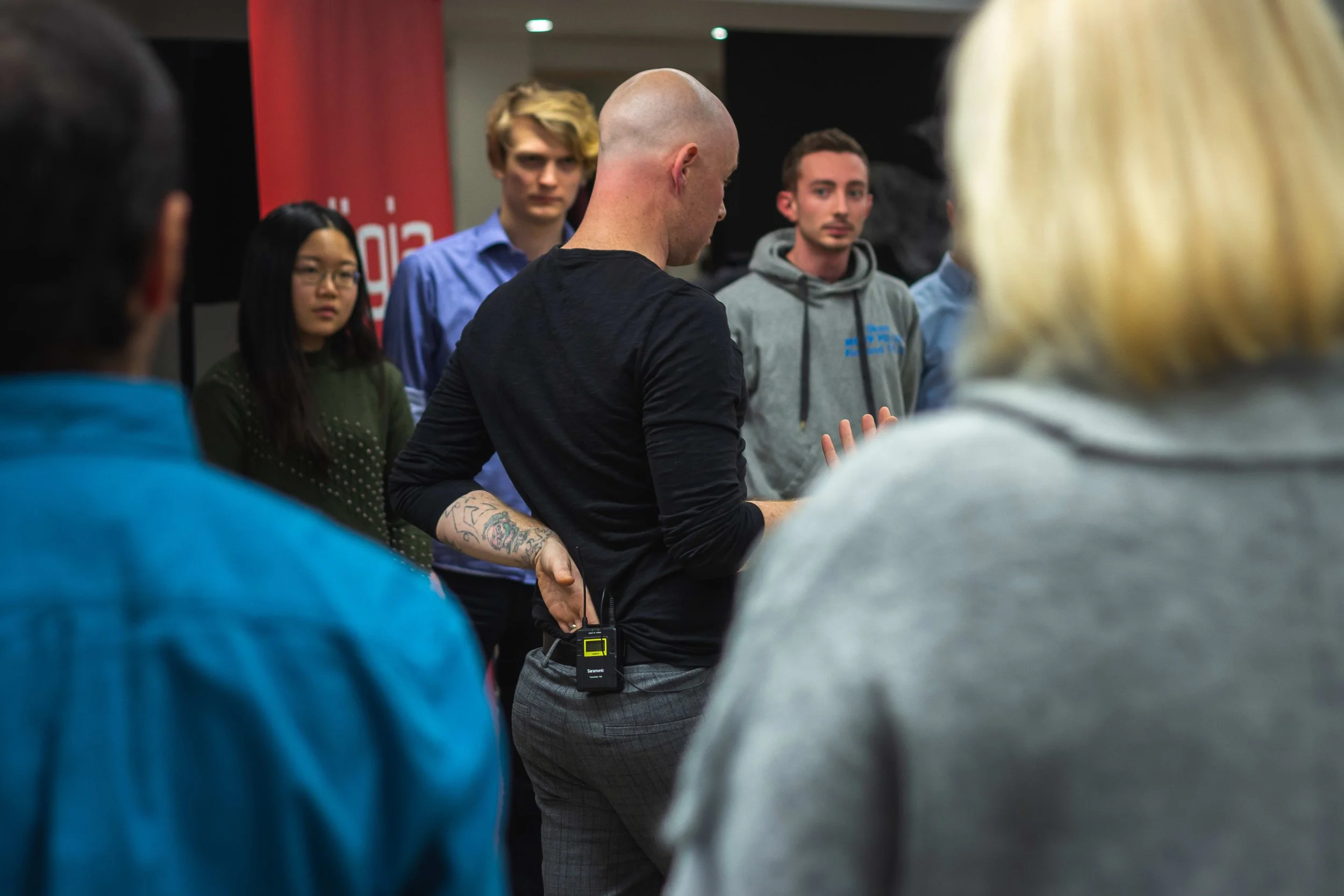
The character
voice
checklist
HOW TO CREATE 100+ DISTINCTLY DIFFERENT VOICES
A Practical, Step-By-Step Guide
You don’t need talent or mimicry to create a huge range of character voices.
All you need is a structured checklist.
Use this guide to generate dozens, hundreds, or even thousands of variations.
At the bottom of the list you can download a pdf of this guide.
1. Start With Laban Efforts (8 Voice Textures)
Rudolf Laban created a system for describing movement qualities.
You can apply the same qualities to vocal delivery.
Laban divides action into three variables:
Weight: Light / Strong
Space: Direct / Indirect
Time: Sudden / Sustained
When combined, they produce 8 distinct effort qualities:
Dab — light, direct, sudden
Flick — light, indirect, sudden
Press — strong, direct, sustained
Thrust/Punch — strong, direct, sudden
Wring — strong, indirect, sustained
Slash — strong, indirect, sudden
Float — light, indirect, sustained
Glide — light, direct, sustained
These 8 give you your first 8 voices.
2. Add Placement (3 Options)
Where does the voice resonate?
Nasal (forward, in the nose)
Throaty (low, constricted)
Neutral (balanced resonance)
8 Laban Efforts × 3 Placements = 24 voices
3. Add Breath Quality (2 Options)
Breathy
Dry/Clean
24 × 2 = 48 voices
4. Add Age Profile (3 Options)
Not about accuracy — about intention.
Your version of:
Child
Adult
Old
48 × 3 = 144 voices
5. Add Gender Expression (2 Options)
Not “sound like a man or woman” but your interpretation of masculine vs feminine energy.
Masculine-coded
Feminine-coded
144 × 2 = 288 voices
6. Add Size (3 Options)
Think physical scale or “vocal size.”
Small (mouse-like, compressed)
Medium (neutral)
Large (broad, expansive)
288 × 3 = 864 voices
7. Add Tempo (3 Options)
Speed changes character drastically:
Slow
Neutral
Fast
864 × 3 = 2,592 voices
8. Add Volume (3 Options)
Quiet
Medium
Loud
2,592 × 3 = 7,776 voices
9. Add Attitude (3 Options)
Tone = the character’s emotional worldview.
Friendly
Neutral/Impartial
Aggressive/Hostile
7,776 × 3 = 23,328 voices
10. Add Accent (10 Example Options)
Pick any accents you can attempt. Example set of ten:
Californian
Southern US
New York
Irish
Scottish
RP
Cockney
Indian
Nigerian
South African
23,328 × 10 = 233,280 voices
11. Add Speech Modifiers (3 Common Options)
Examples:
Lisp
Hard-of-hearing speech pattern
Unique articulation habit
233,280 × 3 = 699,840 voices

NEED PERSONAL 1-2-1 GUIDANCE?
If you are struggling with your character development and feel you would benefit from private coaching to fast-track your way to nailing that voice or accent. 1-2-1 coaching can help.
1-2-1 Coaching includes weekly meetings along with daily personalised WhatsApp feedback, ensuring you stay consistent and keep moving toward your goals.
